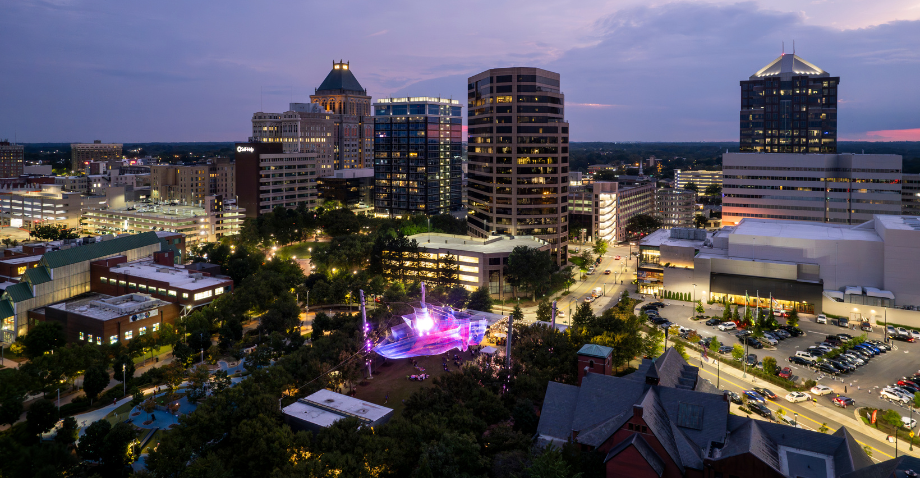- Lutherans from Germany were the first settlers in what is now Guilford County.
- The Germans were the first to have a church, Friedens, where worship continues today.
- Friedens, near the town of Gibsonville, ranks as the county’s oldest church.
The first trees felled in Greensboro in the 1740s built churches for newly-arrived settlers. In late 2010, Men’s Health named Greensboro the second-holiest city in the United States, based on the number of places of worship, the count of religious organizations, and the amount of volunteers who support these groups.
Lutheran Churches
Quaker Churches
- During the 1760s, the Quakers founded New Garden in western Guilford County.
- Another group of Quakers settled in the Centre Community in southern Guilford County soon after.
- Both the New Garden Friends Meeting and the Centre Friends Meeting survive more than 200 years later.
- In the decades before and leading up to the Civil War, Quakers in both Centre and New Garden fiercely opposed slavery. New Garden residents instituted the Underground Railroad to help slaves flee to the North and Canada.
Presbyterian Churches
- The Scotch-Irish settled in Guilford County’s mid-section and founded two Presbyterian churches- Buffalo Presbyterian Church in 1756 and Alamance Presbyterian Church in 1762.
- Upon Greensboro’s founding in 1808, the first chartered church was First Presbyterian, organized in 1824 in a simple building downtown.
- In 1927, the church took up new residence in a gothic cathedral overlooking Fisher Park; the church’s former building downtown is now part of the Greensboro Historical Museum.
Methodist Churches
- Greensboro is home to more than half a dozen Methodist churches, including West Market Street United Methodist, Christ United Methodist, Grace United Methodist, Centenary United Methodist, Muirs Chapel United Methodist, College Place United Methodist, and Irving Park United Methodist.
- However, Greensboro is one of a few cities in the country without a First Methodist Church.
Catholic Churches
- The Greensboro Catholic population was small in the beginning. Numerous families had the means to start St. Agnes Church in 1877; the congregation later outgrew the original site and built St. Benedict’s in 1899.
- The city had a small group of African-American Catholics who formed the Immaculate Heart of Medal Church; it is now called St. Mary’s and serves many diverse ethnicities.
- Catholicism began to grow in the second half of the 20th century, as industries and businesses brought many northerners to the area. Our Lady of Grace, St. Pius, and St. Paul’s all opened in the second half of the 20th century.
Synagogues
- The city’s first Jewish worshipers gathered for Sunday school and informal discussion in 1900.
- In 1908, the Greensboro Hebrew Congregation, with many prosperous members including the mill-owning Cone Family, started the Greensboro Hebrew Congregation in a former Quaker church. The congregation later bought land in Fisher Park and built Temple Emanuel in 1923.
- In 1949, the conservative Orthodox membership of Temple Emanuel broke off and founded Beth David Synagogue – first in a building overlooking Lake Daniel Park then later moved into a larger structure just off West Friendly Avenue.
African-American Churches
- African-American churches did not appear in Greensboro until after the Civil War. After the war, former slaves founded St. James Presbyterian Church.
- Previously, slaves were welcomed in many churches, though they had to sit in segregated sections.
Megachurches
- Like many cities, Greensboro has seen the growth of independent megachurches in the last 30 years.
- Considered to be the largest, Westover Church started as a small Presbyterian church in the early 1950s across from Grimsley High School. Today, the sanctuary is nearly as large as the Greensboro Coliseum.

